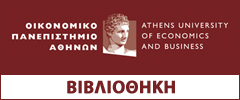| Abstract : | The debate on the way of stabilizing the economy, through cuts in public spendingor rises in taxes, has been intensified after the crisis in 2008. This holds primarily for theEurozone periphery countries. In view of high public debts, these countries have been urgedto adopt restrictive fiscal policies which have further dampened demand and have worsenedthe recession, at least in the short term. It is known that within a dynamic general equilibrium(DGE) model with a representative agent a reduction of capital tax rates and the move of thetax burden to labour taxes produces social welfare benefits. However, one should not neglectthe resulting distributional implications, which may favour some social groups vis-à-visothers. Such distributional implications are significantly influenced by imperfections inproduct and labour markets. Thus, this paper employs a DGE model that incorporatesheterogeneous agents (entrepreneurs and workers) and imperfectly competitive product andlabour markets, augmented with a relatively rich public sector, to quantify themacroeconomic and distributional implications of fiscal reforms like the above in the euroarea. Our main results are as follows: First, the most effective policy for the government to boostoutput is to reduce the capital tax rate, regardless the policy instrument that adjusts. Inaddition, if the goal of tax-spending policy is to promote welfare, then it should decrease thetax rate on labour and increase the consumption tax rate. Finally, a reduction in any of thetax rates, financed by an increase in capital tax rate, leads to a fall of inequality between thetwo social groups.
|
|---|







 Copyright © 2013 Library AUEB. All rights reserved.
Copyright © 2013 Library AUEB. All rights reserved.